Abstract
In the pursuit of efficient habilitation, many service providers exercise a great deal of control over the lives of clients with developmental disabilities. For example, service providers often choose the client's habilitative goals, determine the daily schedule, and regulate access to preferred activities. This paper examines the advantages and disadvantages of allowing clients to exercise personal liberties, such as the right to choose and refuse daily activities. On one hand, poor choices on the part of the client could hinder habilitation. On the other hand, moral and legal issues arise when the client's right to choice is abridged. Recommendations are offered to protect both the right to habilitation and the freedom to choose.
Full text
PDF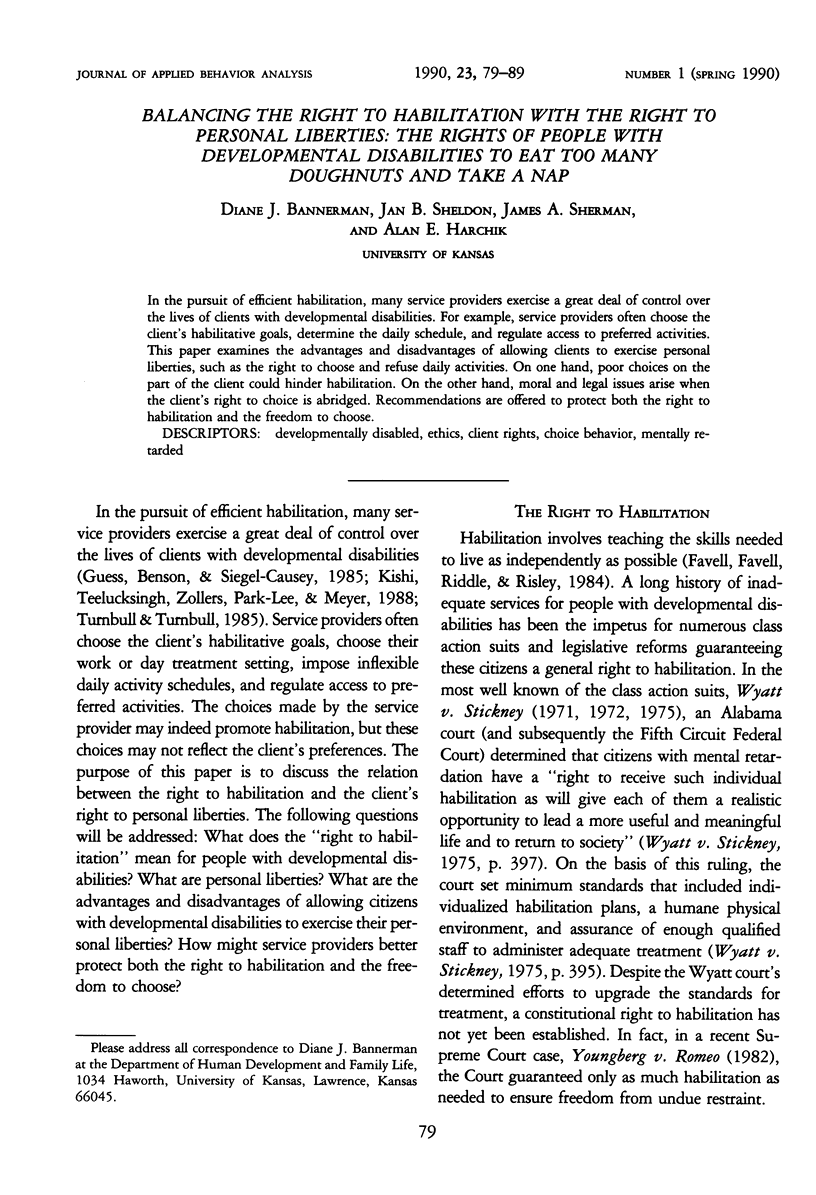
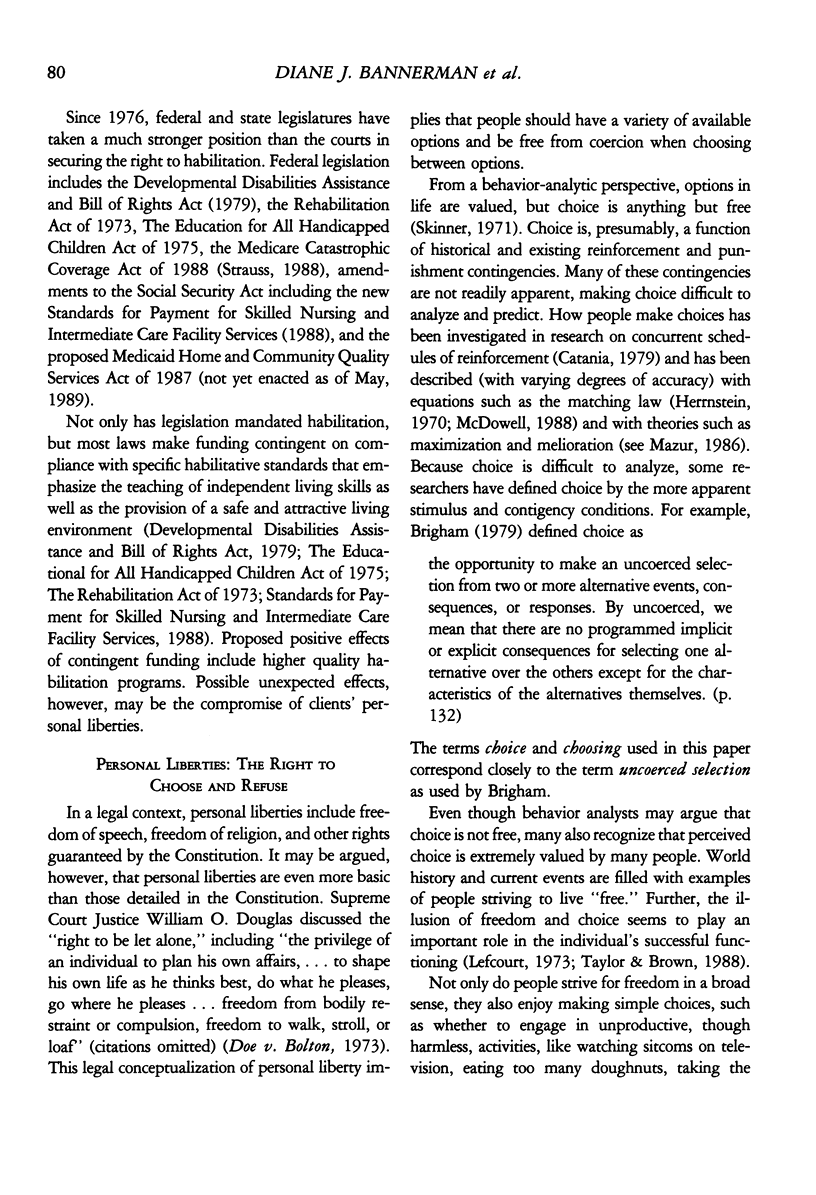
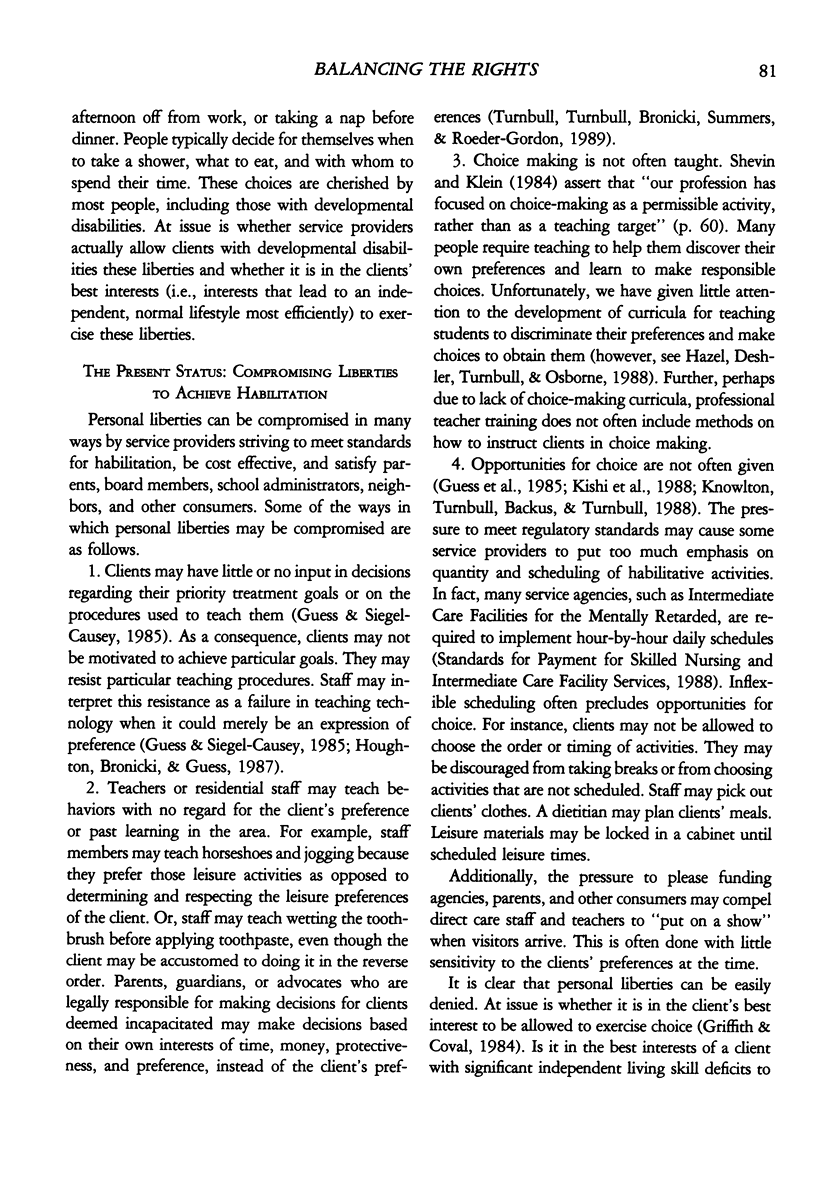
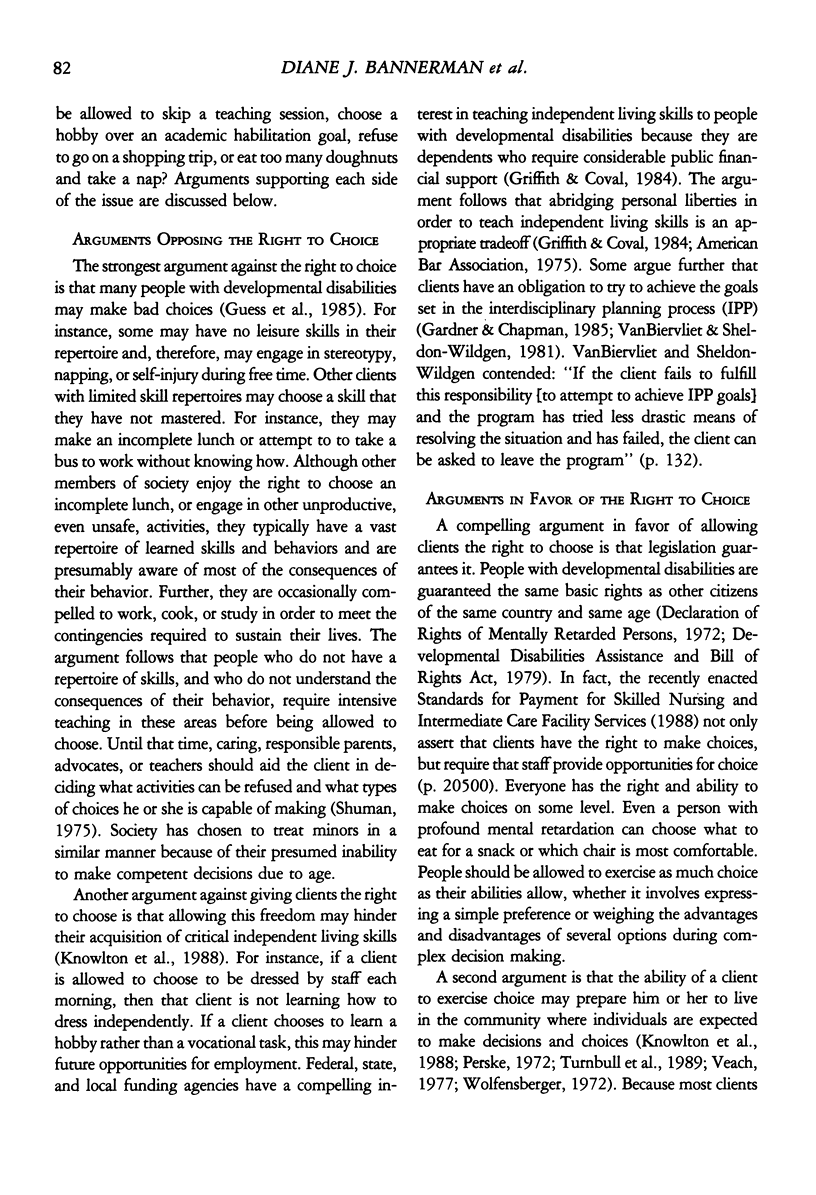
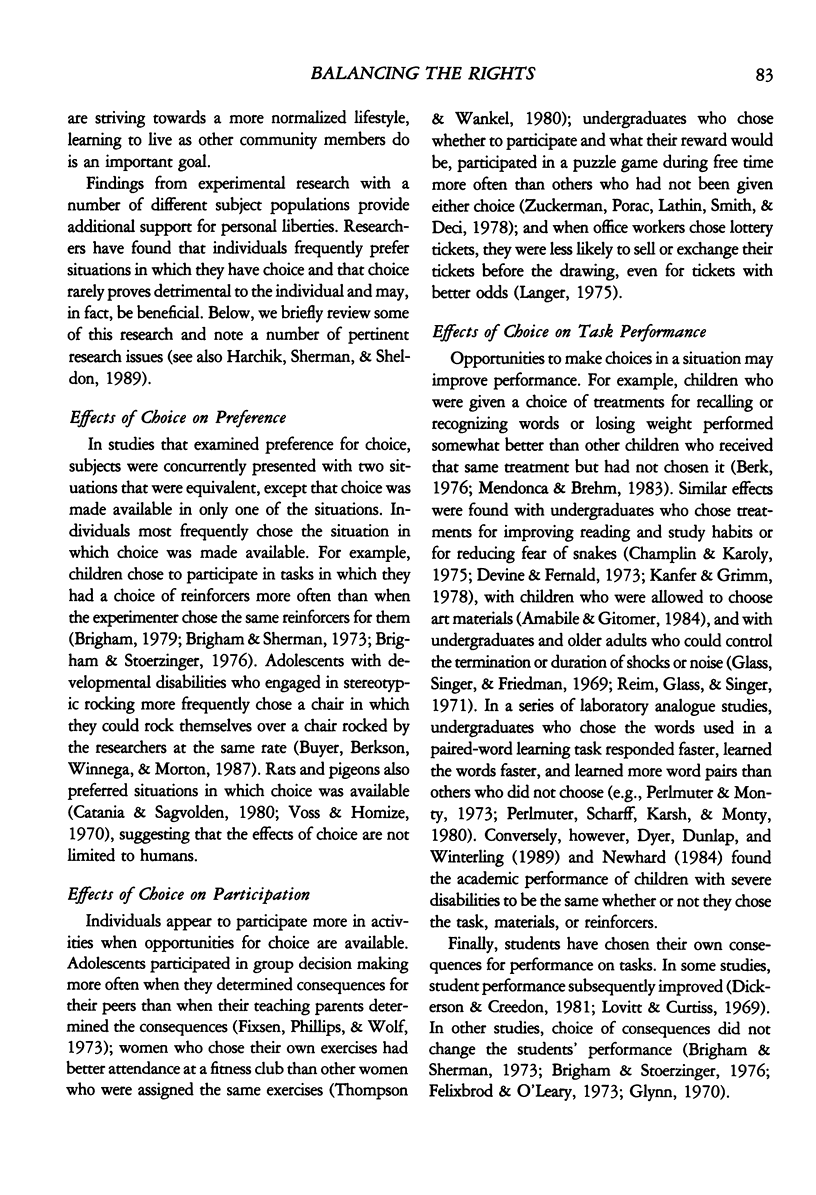
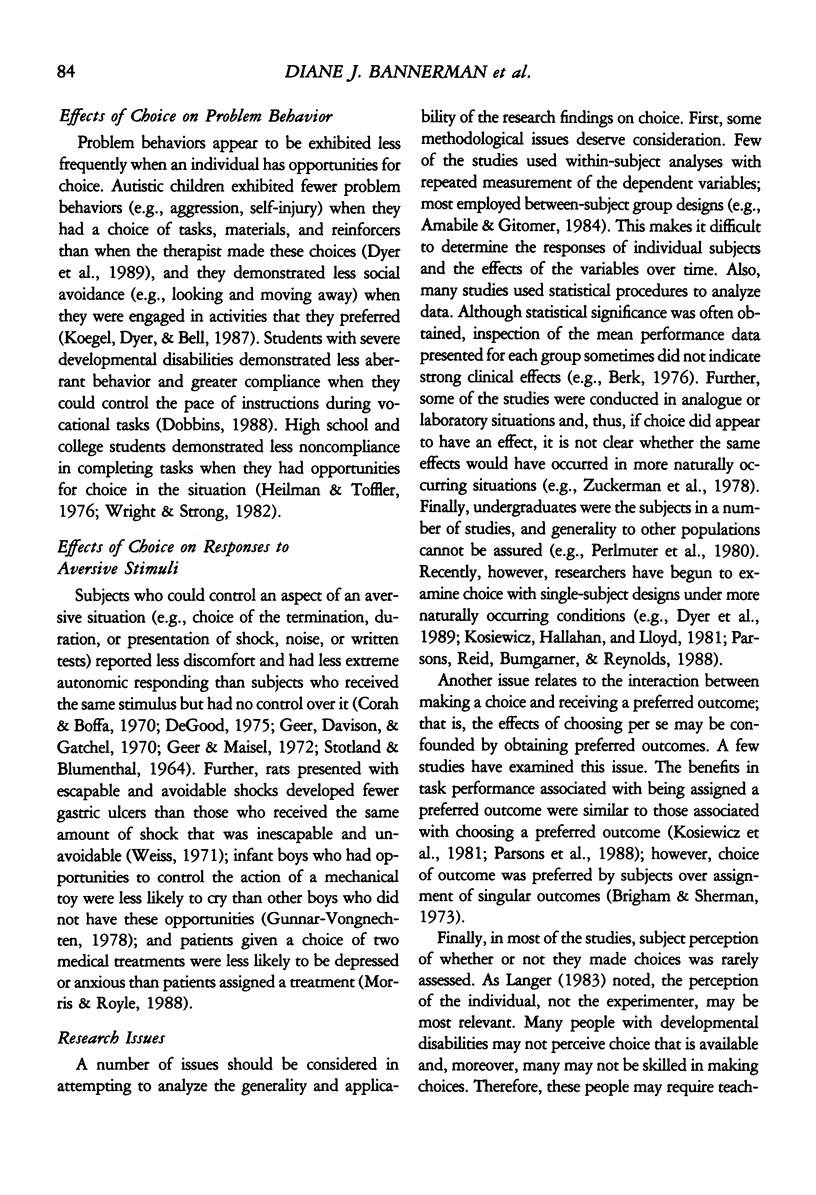
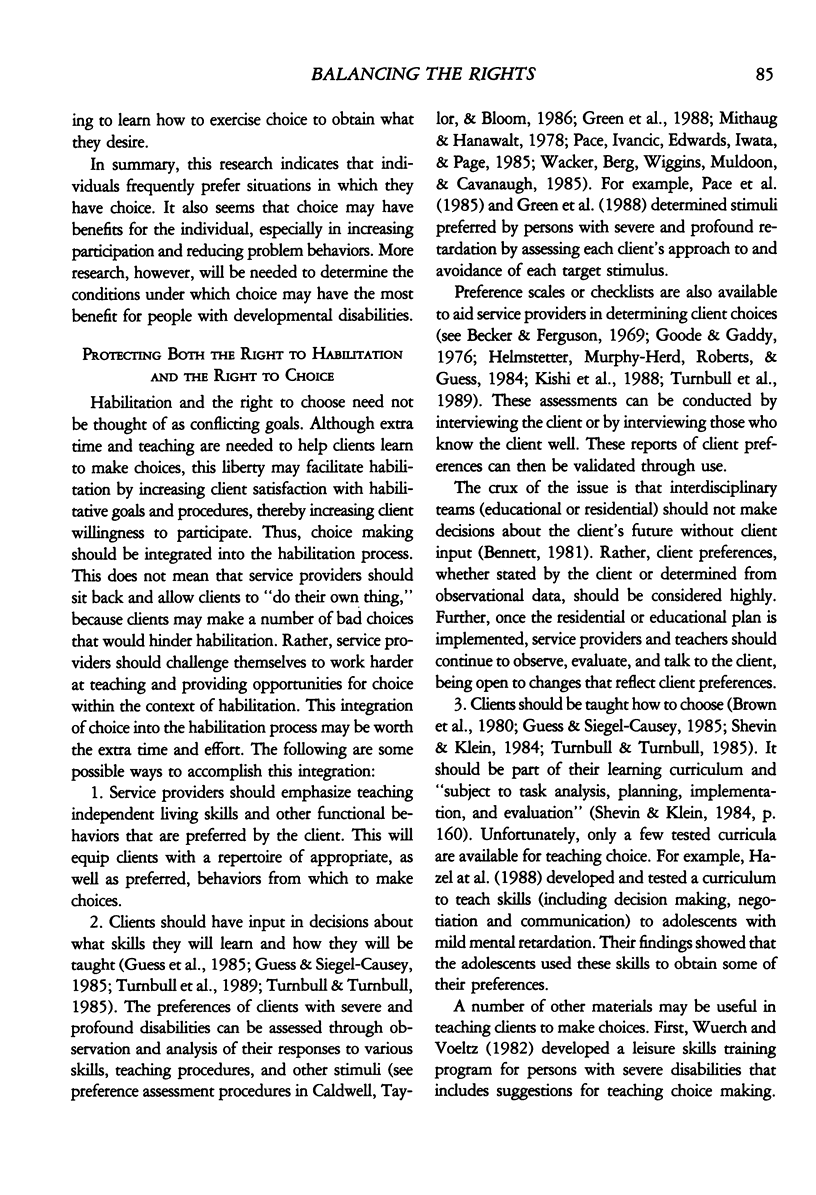
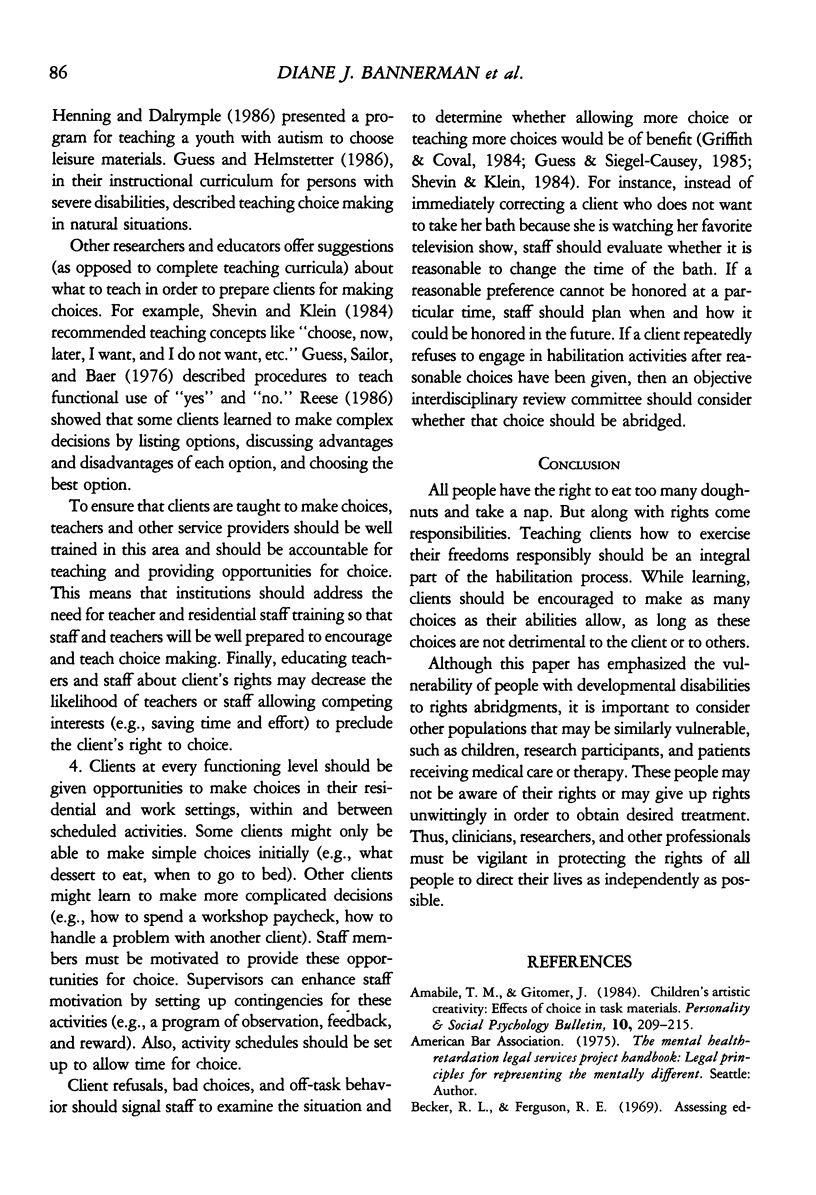
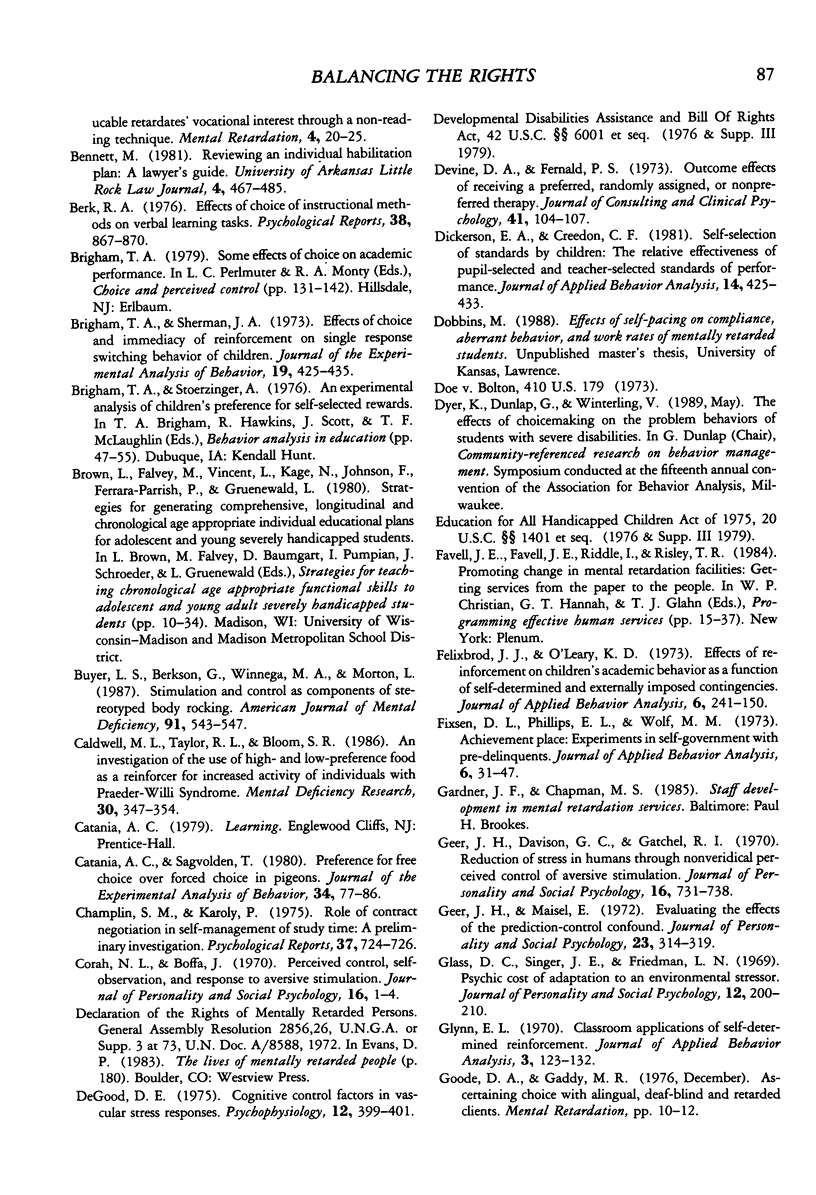
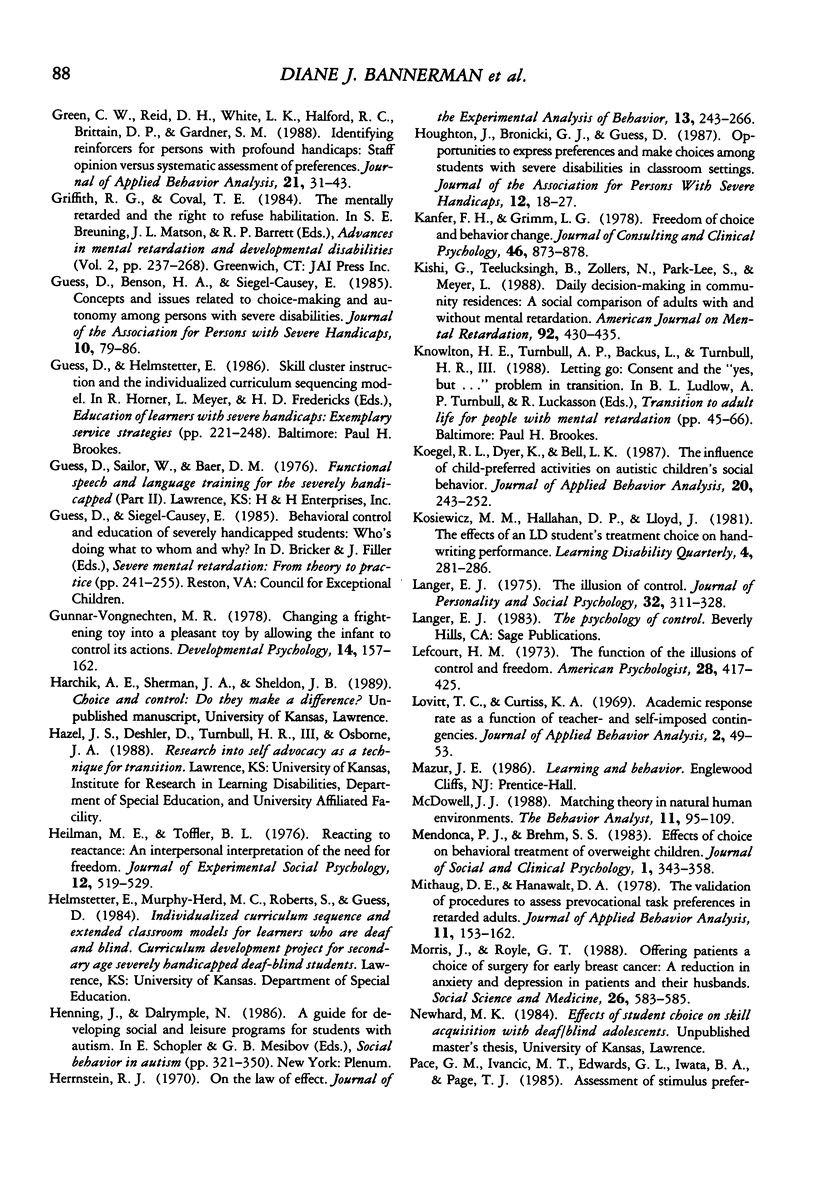
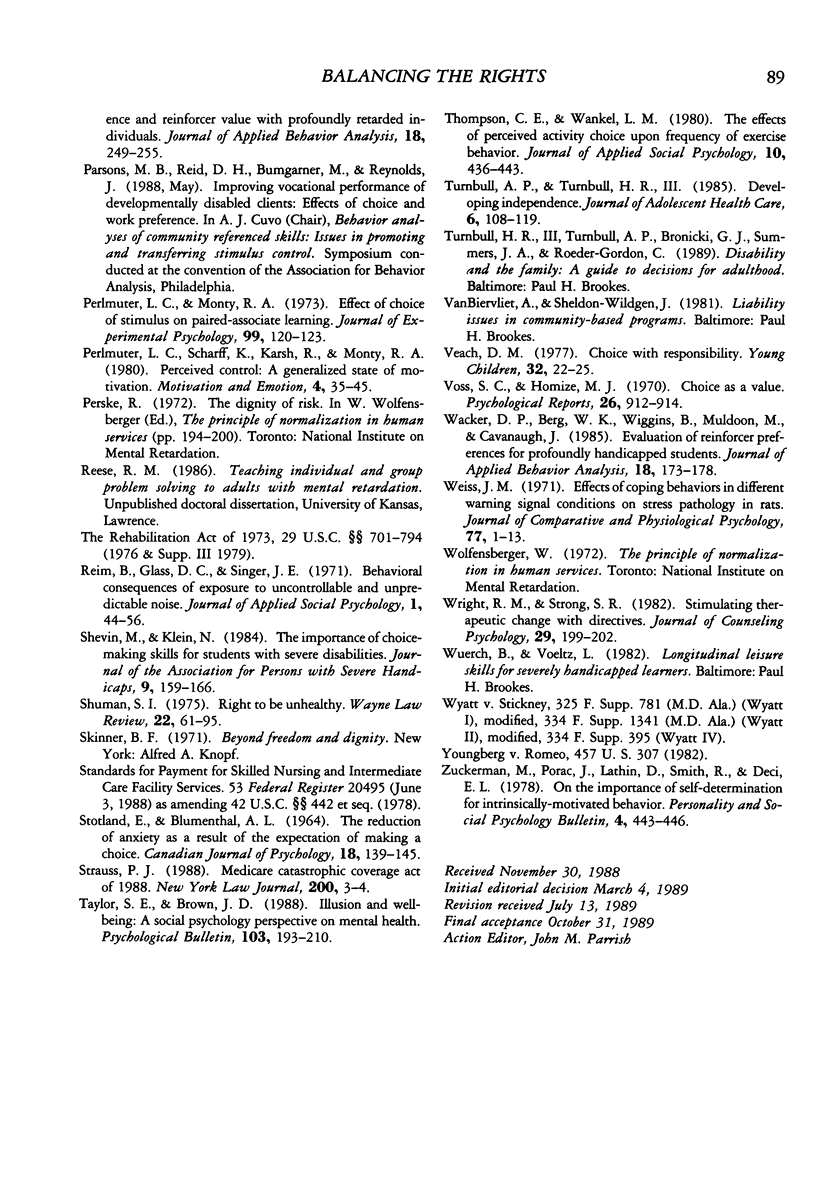
Selected References
These references are in PubMed. This may not be the complete list of references from this article.
- Becker R. L., Ferguson R. E. Assessing educable retardates vocational interest through a non-reading technique. Ment Retard. 1969 Dec;7(6):20–25. [PubMed] [Google Scholar]
- Brigham T. A., Sherman J. A. Effects of choice and immediacy of reinforcement on single response and switching behavior of children. J Exp Anal Behav. 1973 May;19(3):425–435. doi: 10.1901/jeab.1973.19-425. [DOI] [PMC free article] [PubMed] [Google Scholar]
- Buyer L. S., Berkson G., Winnega M. A., Morton L. Stimulation and control as components of stereotyped body rocking. Am J Ment Defic. 1987 Mar;91(5):543–547. [PubMed] [Google Scholar]
- Caldwell M. L., Taylor R. L., Bloom S. R. An investigation of the use of high- and low-preference food as a reinforcer for increased activity of individuals with Prader-Willi syndrome. J Ment Defic Res. 1986 Dec;30(Pt 4):347–354. doi: 10.1111/j.1365-2788.1986.tb01330.x. [DOI] [PubMed] [Google Scholar]
- Catania A. C., Sagvolden T. Preference for free choice over forced choice in pigeons. J Exp Anal Behav. 1980 Jul;34(1):77–86. doi: 10.1901/jeab.1980.34-77. [DOI] [PMC free article] [PubMed] [Google Scholar]
- DeGood D. E. Cognitive control factors in vascular stress responses. Psychophysiology. 1975 Jul;12(4):399–401. doi: 10.1111/j.1469-8986.1975.tb00010.x. [DOI] [PubMed] [Google Scholar]
- Devine D. A., Fernald P. S. Outcome effects of receiving a preferred, randomly assigned, or nonpreferred therapy. J Consult Clin Psychol. 1973 Aug;41(1):104–107. doi: 10.1037/h0035617. [DOI] [PubMed] [Google Scholar]
- Dickerson E. A., Creedon C. F. Self-selection of standards by children: The relative effectiveness of pupil-selected and teacher-selected standards of performance. J Appl Behav Anal. 1981 Winter;14(4):425–433. doi: 10.1901/jaba.1981.14-425. [DOI] [PMC free article] [PubMed] [Google Scholar]
- Felixbrod J. J., O'leary K. D. Effects of reinforcement on children's academic behavior as a function of self-determined and externally imposed contingencies. J Appl Behav Anal. 1973 Summer;6(2):241–250. doi: 10.1901/jaba.1973.6-241. [DOI] [PMC free article] [PubMed] [Google Scholar]
- Fixsen D. L., Phillips E. L., Wolf M. M. Achievement Place: experiments in self-government with pre-delinquents. J Appl Behav Anal. 1973 Spring;6(1):31–47. doi: 10.1901/jaba.1973.6-31. [DOI] [PMC free article] [PubMed] [Google Scholar]
- Geer J. H., Davison G. C., Gatchel R. I. Reduction of stress in humans through nonveridical perceived control of aversive stimulation. J Pers Soc Psychol. 1970 Dec;16(4):731–738. doi: 10.1037/h0030014. [DOI] [PubMed] [Google Scholar]
- Geer J. H., Maisel E. Evaluating the effects of the prediction-control confound. J Pers Soc Psychol. 1972 Sep;23(3):314–319. doi: 10.1037/h0033122. [DOI] [PubMed] [Google Scholar]
- Glass D. C., Siger J. E., Friedman L. N. Psychic cost of adaptation to an environmental stressor. J Pers Soc Psychol. 1969 Jul;12(3):200–210. doi: 10.1037/h0027629. [DOI] [PubMed] [Google Scholar]
- Glynn E. L. Classroom applications of self-determined reinforcement. J Appl Behav Anal. 1970 Summer;3(2):123–132. doi: 10.1901/jaba.1970.3-123. [DOI] [PMC free article] [PubMed] [Google Scholar]
- Goode D. A., Gaddy M. R. Ascertaining choice with alingual, deaf-blind and retarded clients. Ment Retard. 1976 Dec;14(6):10–12. [PubMed] [Google Scholar]
- Green C. W., Reid D. H., White L. K., Halford R. C., Brittain D. P., Gardner S. M. Identifying reinforcers for persons with profound handicaps: staff opinion versus systematic assessment of preferences. J Appl Behav Anal. 1988 Spring;21(1):31–43. doi: 10.1901/jaba.1988.21-31. [DOI] [PMC free article] [PubMed] [Google Scholar]
- Herrnstein R. J. On the law of effect. J Exp Anal Behav. 1970 Mar;13(2):243–266. doi: 10.1901/jeab.1970.13-243. [DOI] [PMC free article] [PubMed] [Google Scholar]
- Kanfer F. H., Grimm L. G. Freedom of choice and behavioral change. J Consult Clin Psychol. 1978 Oct;46(5):873–878. doi: 10.1037//0022-006x.46.5.873. [DOI] [PubMed] [Google Scholar]
- Kishi G., Teelucksingh B., Zollers N., Park-Lee S., Meyer L. Daily decision-making in community residences: a social comparison of adults with and without mental retardation. Am J Ment Retard. 1988 Mar;92(5):430–435. [PubMed] [Google Scholar]
- Koegel R. L., Dyer K., Bell L. K. The influence of child-preferred activities on autistic children's social behavior. J Appl Behav Anal. 1987 Fall;20(3):243–252. doi: 10.1901/jaba.1987.20-243. [DOI] [PMC free article] [PubMed] [Google Scholar]
- Lefcourt H. M. The function of the illusions of control and freedom. Am Psychol. 1973 May;28(5):417–425. doi: 10.1037/h0034639. [DOI] [PubMed] [Google Scholar]
- Lovitt T. C., Curtiss K. A. Academic response rate as a function of teacher- and self-imposed contingencies. J Appl Behav Anal. 1969 Spring;2(1):49–53. doi: 10.1901/jaba.1969.2-49. [DOI] [PMC free article] [PubMed] [Google Scholar]
- Mithaug D. E., Hanawalt D. A. The validation of procedures to assess prevocational task preferences in retarded adults. J Appl Behav Anal. 1978 Spring;11(1):153–162. doi: 10.1901/jaba.1978.11-153. [DOI] [PMC free article] [PubMed] [Google Scholar]
- Morris J., Royle G. T. Offering patients a choice of surgery for early breast cancer: a reduction in anxiety and depression in patients and their husbands. Soc Sci Med. 1988;26(6):583–585. doi: 10.1016/0277-9536(88)90021-4. [DOI] [PubMed] [Google Scholar]
- Pace G. M., Ivancic M. T., Edwards G. L., Iwata B. A., Page T. J. Assessment of stimulus preference and reinforcer value with profoundly retarded individuals. J Appl Behav Anal. 1985 Fall;18(3):249–255. doi: 10.1901/jaba.1985.18-249. [DOI] [PMC free article] [PubMed] [Google Scholar]
- STOTLAND E., BLUMENTHAL A. L. THE REDUCTION OF ANXIETY AS A RESULT OF THE EXPECTATION OF MAKING A CHOICE. Can J Psychol. 1964 Jun;18:139–145. doi: 10.1037/h0083492. [DOI] [PubMed] [Google Scholar]
- Shuman S. I. The right to be unhealthy. Wayne Law Rev. 1975 Nov;22(1):61–85. [PubMed] [Google Scholar]
- Taylor S. E., Brown J. D. Illusion and well-being: a social psychological perspective on mental health. Psychol Bull. 1988 Mar;103(2):193–210. [PubMed] [Google Scholar]
- Turnbull A. P., Turnbull H. R., 3rd Developing independence. J Adolesc Health Care. 1985 Mar;6(2):108–119. doi: 10.1016/s0197-0070(85)80035-8. [DOI] [PubMed] [Google Scholar]
- Wacker D. P., Berg W. K., Wiggins B., Muldoon M., Cavanaugh J. Evaluation of reinforcer preferences for profoundly handicapped students. J Appl Behav Anal. 1985 Summer;18(2):173–178. doi: 10.1901/jaba.1985.18-173. [DOI] [PMC free article] [PubMed] [Google Scholar]
- Weiss J. M. Effects of coping behavior in different warning signal conditions on stress pathology in rats. J Comp Physiol Psychol. 1971 Oct;77(1):1–13. doi: 10.1037/h0031583. [DOI] [PubMed] [Google Scholar]


